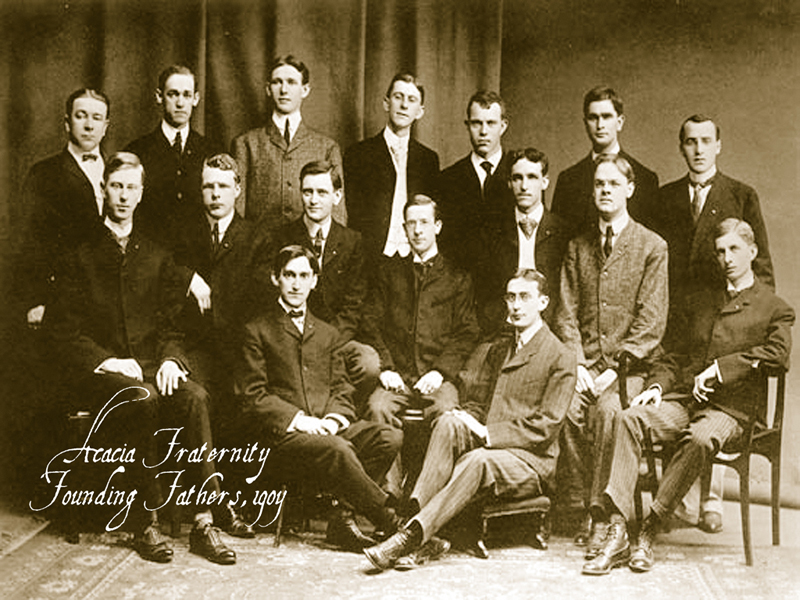Founders' Day 2013
One-hundred nine years ago today, our Founding Fathers came together to start our Fraternity. But what would it have looked like if these fourteen men came together to start Acacia Fraternity not in 1904, but in 2013?
 William J. Marshall pulls out his phone to send a quick text message to Charles A. Sink, "Hey, Chuck, meet me at the library tonight. Want 2 talk about starting a new Fraternity." The two men meet and decide to bring some classmates into the fold, so they plan an event and invite some friends via Facebook. Marshall orders a few pizzas for the group, and fourteen men commit to forming Acacia. Harlan P. Rowe gets started on drafting the founding documents, which he posts on Google Drive so the other founders can comment and make changes. Benjamin E. DeRoy has an idea for Acacia’s badge, so he posts his design to the group’s private Facebook page for feedback. Edward E. Gallup uses GroupMe to send a group text message to everyone asking them to meet at his place, where Clarence G. Hill decides the chapter needs to create a Twitter account to share recruitment information with potential new members.
William J. Marshall pulls out his phone to send a quick text message to Charles A. Sink, "Hey, Chuck, meet me at the library tonight. Want 2 talk about starting a new Fraternity." The two men meet and decide to bring some classmates into the fold, so they plan an event and invite some friends via Facebook. Marshall orders a few pizzas for the group, and fourteen men commit to forming Acacia. Harlan P. Rowe gets started on drafting the founding documents, which he posts on Google Drive so the other founders can comment and make changes. Benjamin E. DeRoy has an idea for Acacia’s badge, so he posts his design to the group’s private Facebook page for feedback. Edward E. Gallup uses GroupMe to send a group text message to everyone asking them to meet at his place, where Clarence G. Hill decides the chapter needs to create a Twitter account to share recruitment information with potential new members.
This story may sound funny, but if you replace the names of our founders with the names of active members from any Acacia chapter across North America, you’ll begin to see a realistic picture of chapter life today, one that is far different from chapter life in 1904. Our Founders knew this would inevitably be the case - that countless aspects of life would continue to change beyond their recognition. In fact, George A. Malcolm wrote in 1953 upon nearing Acacia’s 50th anniversary:
Paradoxically, many traditions of our Fraternity remain unchanged since our earliest days — chapter meetings, shared meals, football games, sorority mixers and, of course, the Acacia Ritual. In fact, this paradox is central to our Ritual: recall our rescuers, two students who contemplate the symbol of the Acacia tree in their attempt to reconcile the shortness of human life with the idea of the eternal.
And so, through experiencing myriad changes to fraternity life over the course of 109 years, we find that nothing has changed at all. While time passes, Acacia Fraternity is timeless.
Today we recognize our Founding Fathers for creating and sharing with us such timeless tradition. If we could, we’d send them a text message to say thanks.
